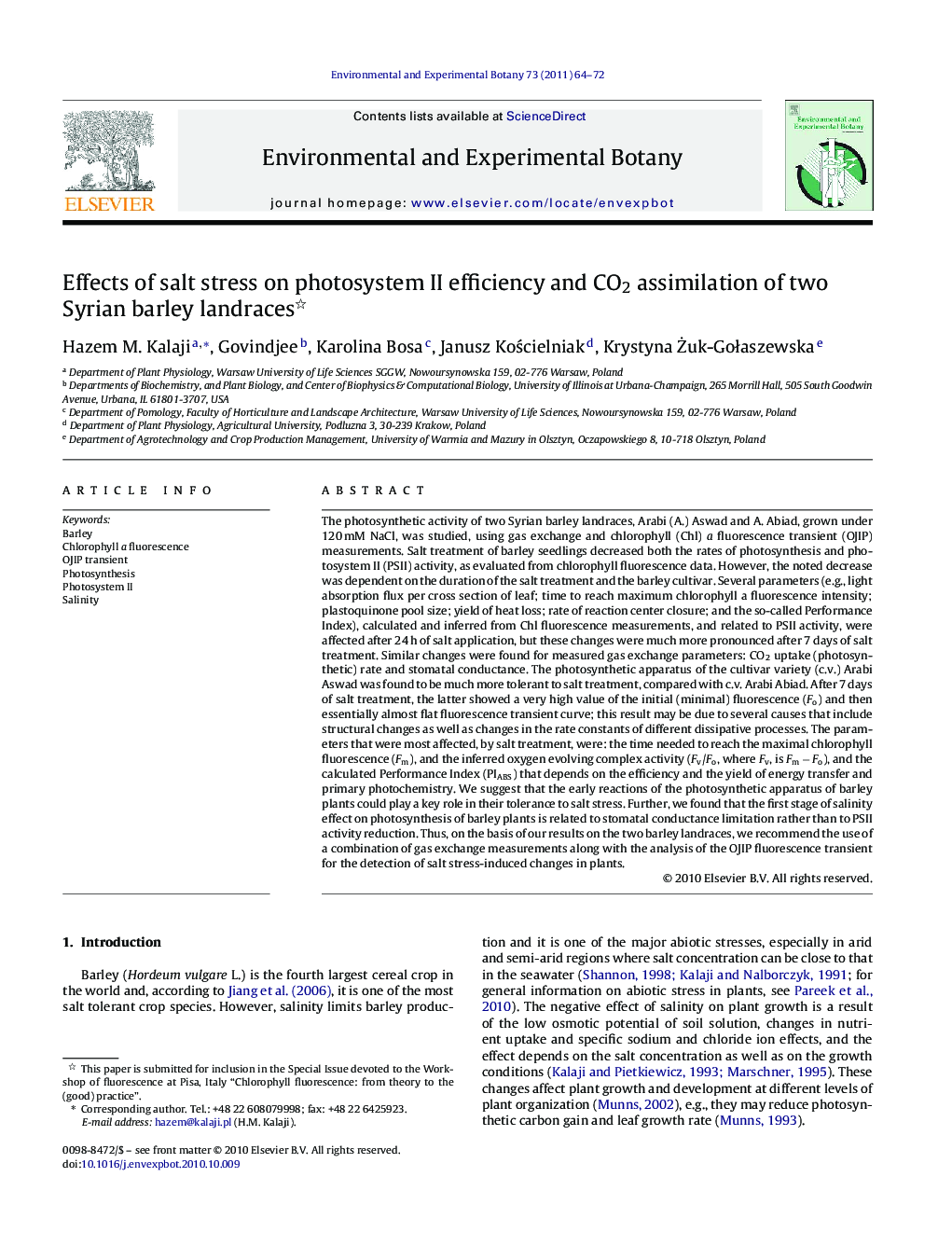| کد مقاله | کد نشریه | سال انتشار | مقاله انگلیسی | نسخه تمام متن |
|---|---|---|---|---|
| 4554874 | 1628104 | 2011 | 9 صفحه PDF | دانلود رایگان |

The photosynthetic activity of two Syrian barley landraces, Arabi (A.) Aswad and A. Abiad, grown under 120 mM NaCl, was studied, using gas exchange and chlorophyll (Chl) a fluorescence transient (OJIP) measurements. Salt treatment of barley seedlings decreased both the rates of photosynthesis and photosystem II (PSII) activity, as evaluated from chlorophyll fluorescence data. However, the noted decrease was dependent on the duration of the salt treatment and the barley cultivar. Several parameters (e.g., light absorption flux per cross section of leaf; time to reach maximum chlorophyll a fluorescence intensity; plastoquinone pool size; yield of heat loss; rate of reaction center closure; and the so-called Performance Index), calculated and inferred from Chl fluorescence measurements, and related to PSII activity, were affected after 24 h of salt application, but these changes were much more pronounced after 7 days of salt treatment. Similar changes were found for measured gas exchange parameters: CO2 uptake (photosynthetic) rate and stomatal conductance. The photosynthetic apparatus of the cultivar variety (c.v.) Arabi Aswad was found to be much more tolerant to salt treatment, compared with c.v. Arabi Abiad. After 7 days of salt treatment, the latter showed a very high value of the initial (minimal) fluorescence (Fo) and then essentially almost flat fluorescence transient curve; this result may be due to several causes that include structural changes as well as changes in the rate constants of different dissipative processes. The parameters that were most affected, by salt treatment, were: the time needed to reach the maximal chlorophyll fluorescence (Fm), and the inferred oxygen evolving complex activity (Fv/Fo, where Fv, is Fm − Fo), and the calculated Performance Index (PIABS) that depends on the efficiency and the yield of energy transfer and primary photochemistry. We suggest that the early reactions of the photosynthetic apparatus of barley plants could play a key role in their tolerance to salt stress. Further, we found that the first stage of salinity effect on photosynthesis of barley plants is related to stomatal conductance limitation rather than to PSII activity reduction. Thus, on the basis of our results on the two barley landraces, we recommend the use of a combination of gas exchange measurements along with the analysis of the OJIP fluorescence transient for the detection of salt stress-induced changes in plants.
► The first effect of NaCl-stress on barley is on stomatal conductance.
► NaCl-stress on barley leads to decreases in photosynthesis and trapping flux to photosystem II.
► NaCl-stress on barley leads to increases in inactive centers and heat flux in photosystem II.
► The barley cultivar Arabi Aswad was much more resistant than Arabi Abiad to NaCl-stress.
Journal: Environmental and Experimental Botany - Volume 73, November 2011, Pages 64–72